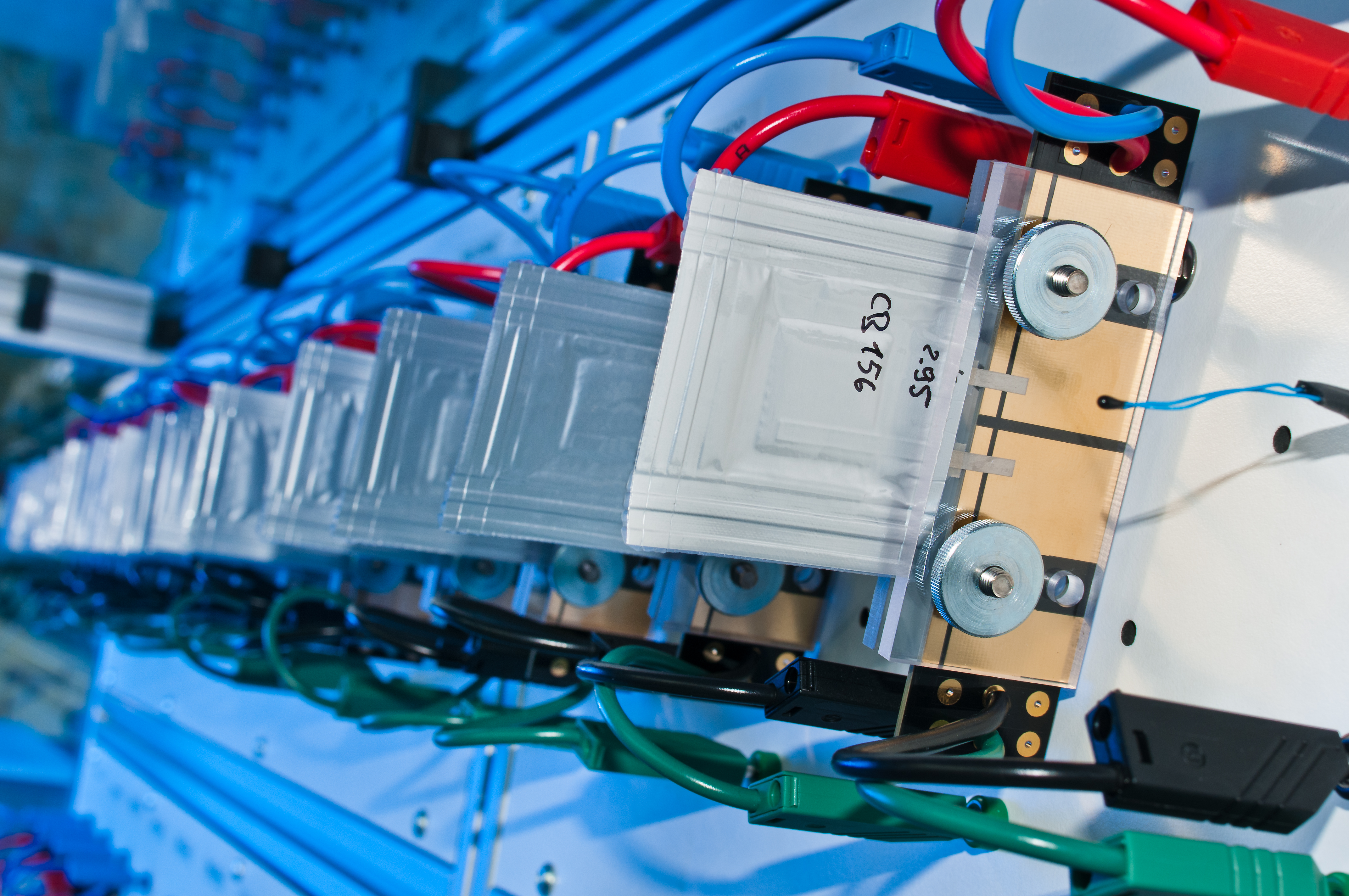More sustainability in electromobility through application of new methods to improve battery service life

In the Fraunhofer Attract project "ProLIBs: A Battery Cell ID Card", the service life of batteries for electric vehicles and other applications is predicted and improved. The new method for lifetime prediction is based on a combination of measurements of battery properties and models of battery cell behavior. These measurements can be made directly while a battery is in use, for example, in an electric car. By applying this method for more accurate lifetime prediction of high energy lithium ion battery cells and other cell types such as solid-state batteries in the battery management system (BMS), it is possible to achieve increased lifetime with optimal charge and discharge profiles.
A new approach to describe the state of health of batteries
Previous approaches to describe the state of health (SOH) of a battery cell are based either on reduced multiphysic models, i.e., simulations that are a simplified description of the battery system and the decomposition process, or on experimental extrapolation of the battery cell cycle life. This determines the empirical relationship between the measured impedance of a cell and the performance (energy and power) of the battery.
In the case of multiphysics modeling, one needs knowledge of all the necessary detailed processes for each cell type, some of which are not yet known or understood. Additionally, in order to transfer this practice to a new cell chemistry, the entire description process must be performed again, which involves considerable effort. This is also the case with the extrapolation from measurements, since here all existing environmental conditions (temperature, pressure, etc.) must be carried out for all cell types to be described. This does not even take into account, e.g., the spatial distribution of the temperature within a cell.
The new approach developed at Fraunhofer IFAM is to describe the lifetime of battery cells using a model based on a limited knowledge of cell chemistry.
For this purpose, mathematical models for nonlinear behavior with "memory" effects (so-called Volterra series) are used to describe the cell properties. This approach offers the advantage that the output of the system depends on the input to the system at all times, i.e. the system has a memory of all previous processes. This is essential for describing the aging process, since the state of the cell depends directly on all the influences to which the battery cells have been subjected during their life.
By measuring the impedance of the battery cells during use (dynamic impedance spectroscopy), it is possible to directly measure these Volterra kernels to describe the nonlinear behavior of the cells. With the help of this mathematical representation, non-measured states can also be taken into account, enabling transferability to other environmental conditions and cell types.
Application in battery management systems (BMS)
The universality of the approach offers the advantage of transferring the results to completely new cell types (e.g. solid-state batteries) with little effort. By implementing it in the battery management system, the data for the lifetime prediction can be obtained during the operation of the system. This data can be used to develop optimized charging strategies, which increases the overall life of the battery system.
The Fraunhofer Attract "Modeling & Simulation" Group
Due to a joint professorship with the University of Bremen, Fraunhofer IFAM has been collaborating with Prof. Fabio La Mantia for several years on the topic of lithium-ion batteries. His new "Modeling & Simulation" research group, which is funded under the Fraunhofer Attract program, is developing methods for predicting the lifetime of battery cells. Under the leadership of Prof. La Mantia, researchers from the fields of chemistry, materials science, production engineering and physics are working in an interdisciplinary team on the synthesis of electrode materials, investigation methods based on dynamic impedance spectroscopy, modeling, and the analysis of lithium ion and other battery cells.
There is close cooperation within Fraunhofer IFAM with the groups "Electrical Energy Storage" and "Functional 3D Printing" as well aswith the Fraunhofer Project Center for Energy Storage and Systems ZESS in Braunschweig and the group "Energy Storage and Energy Conversion Systems" at the University of Bremen.
From idea to innovation: "Fraunhofer Attract"
One of the Fraunhofer-Gesellschaft's key tasks is to support young scientists. The "Fraunhofer Attract" funding program is designed to give researchers the opportunity to develop their ideas further at Fraunhofer in an application-oriented manner.
An idea becomes an innovation when it reaches the application stage. The "Fraunhofer Attract" funding program offers outstanding external scientists the opportunity to advance their ideas toward application within an optimally equipped Fraunhofer institute, close to the market.
 Fraunhofer Institute for Manufacturing Technology and Advanced Materials IFAM
Fraunhofer Institute for Manufacturing Technology and Advanced Materials IFAM